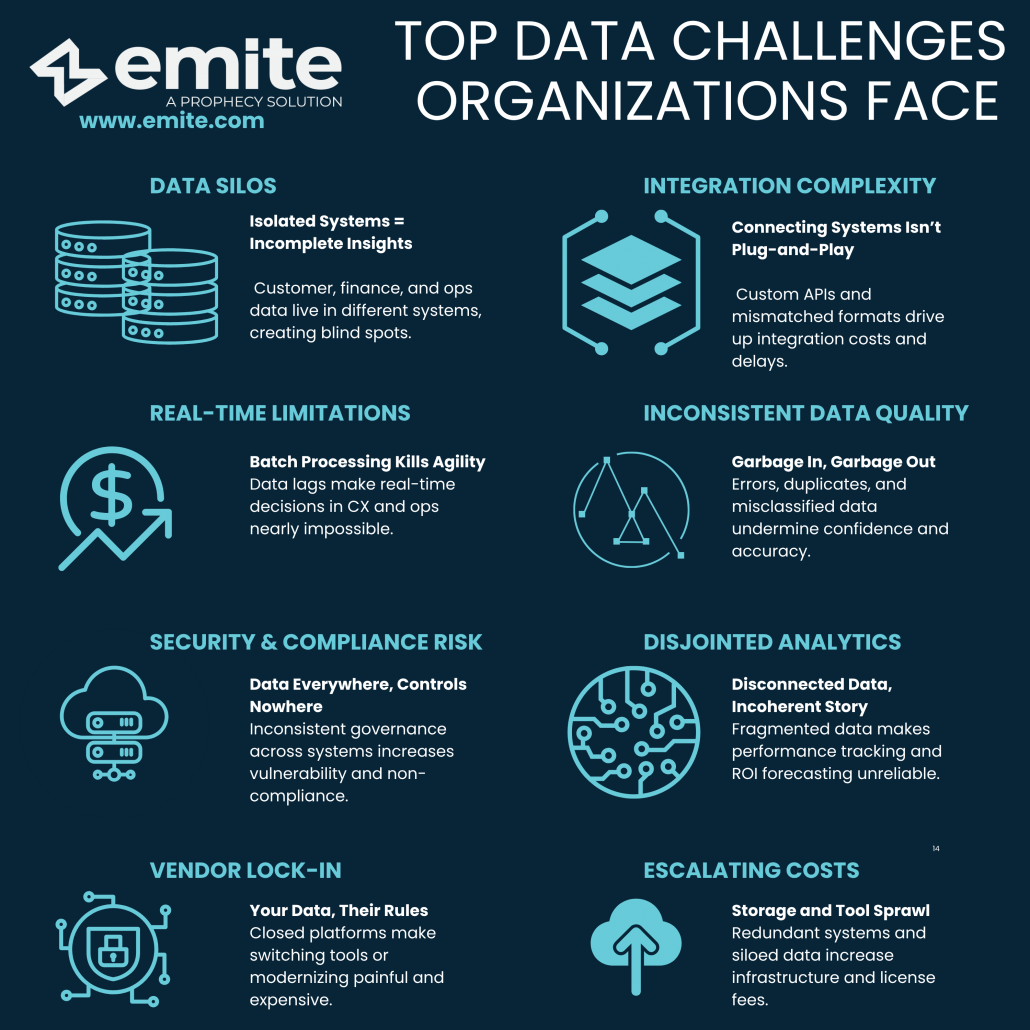1. Data Silos and Fragmentation
Problem: Data is often trapped in isolated systems—such as CRMs, ERPs, marketing platforms, and support tools—each operating independently with limited cross-visibility.
Impact: This fragmentation prevents a unified view of the customer journey, supply chain, or performance metrics. For instance, sales teams may not have access to the latest customer service interactions, leading to misalignment and reduced customer satisfaction. It also hampers strategic initiatives like personalization, predictive analytics, and operational optimization.
2. Integration Complexity
Problem: Many systems use different APIs, data schemas, and formats, making integrations difficult and error-prone. The lack of standardization results in a need for custom connectors or costly middleware.
Impact: Businesses face long lead times and inflated budgets to bring new systems online or update existing integrations. This reduces agility, delays time-to-value from new platforms, and creates long-term technical debt.
3. Latency and Real-Time Limitations
Problem: Legacy systems and batch-based processing often mean data is refreshed only periodically, leading to delays in data propagation between systems.
Impact: For functions like fraud detection, incident response, or CX optimization, these delays can be critical. Teams miss opportunities to respond in real time, leading to lost revenue, compliance issues, or customer churn.
4. Inconsistent Data Quality
Problem: Data may be entered inconsistently across departments or systems—think varying formats for dates, customer names, or SKU codes—leading to duplication or misclassification.
Impact: Teams spend extensive time cleaning and reconciling data before it can be trusted. Poor data quality also undermines analytics outputs, resulting in bad insights and poor business decisions. It also compromises regulatory reporting and compliance.





